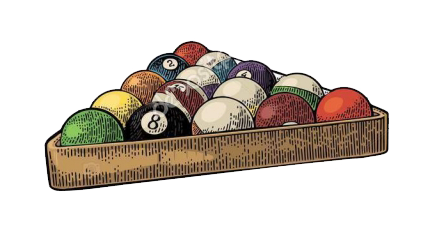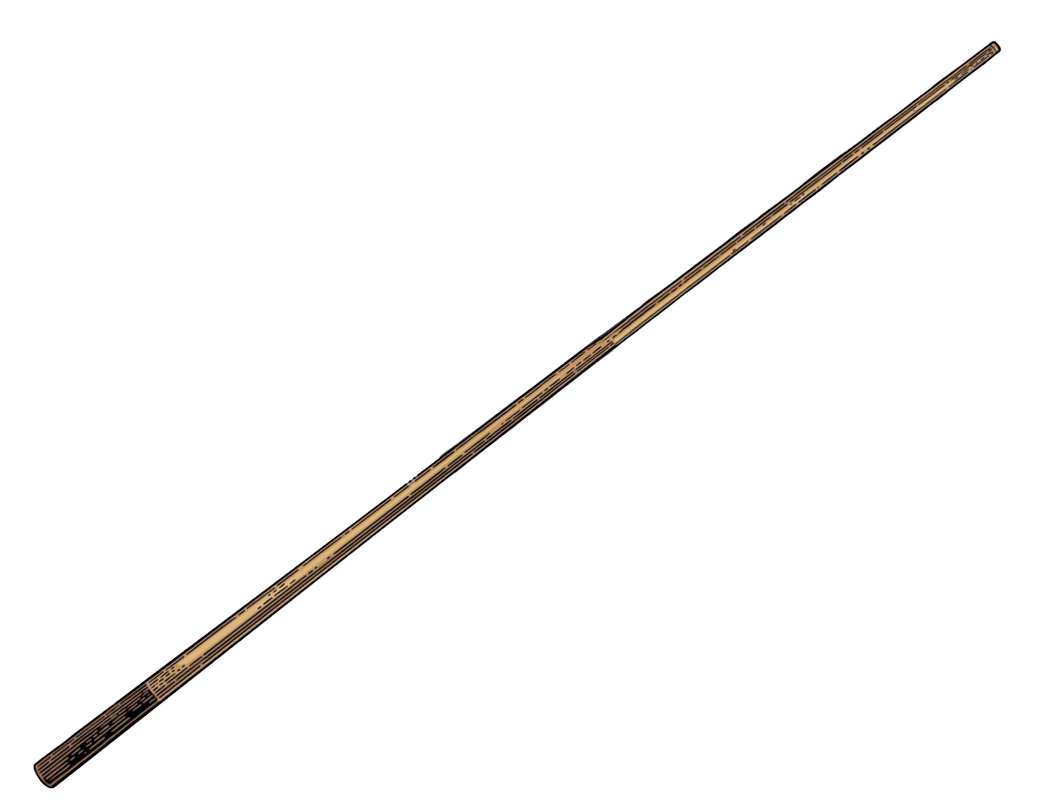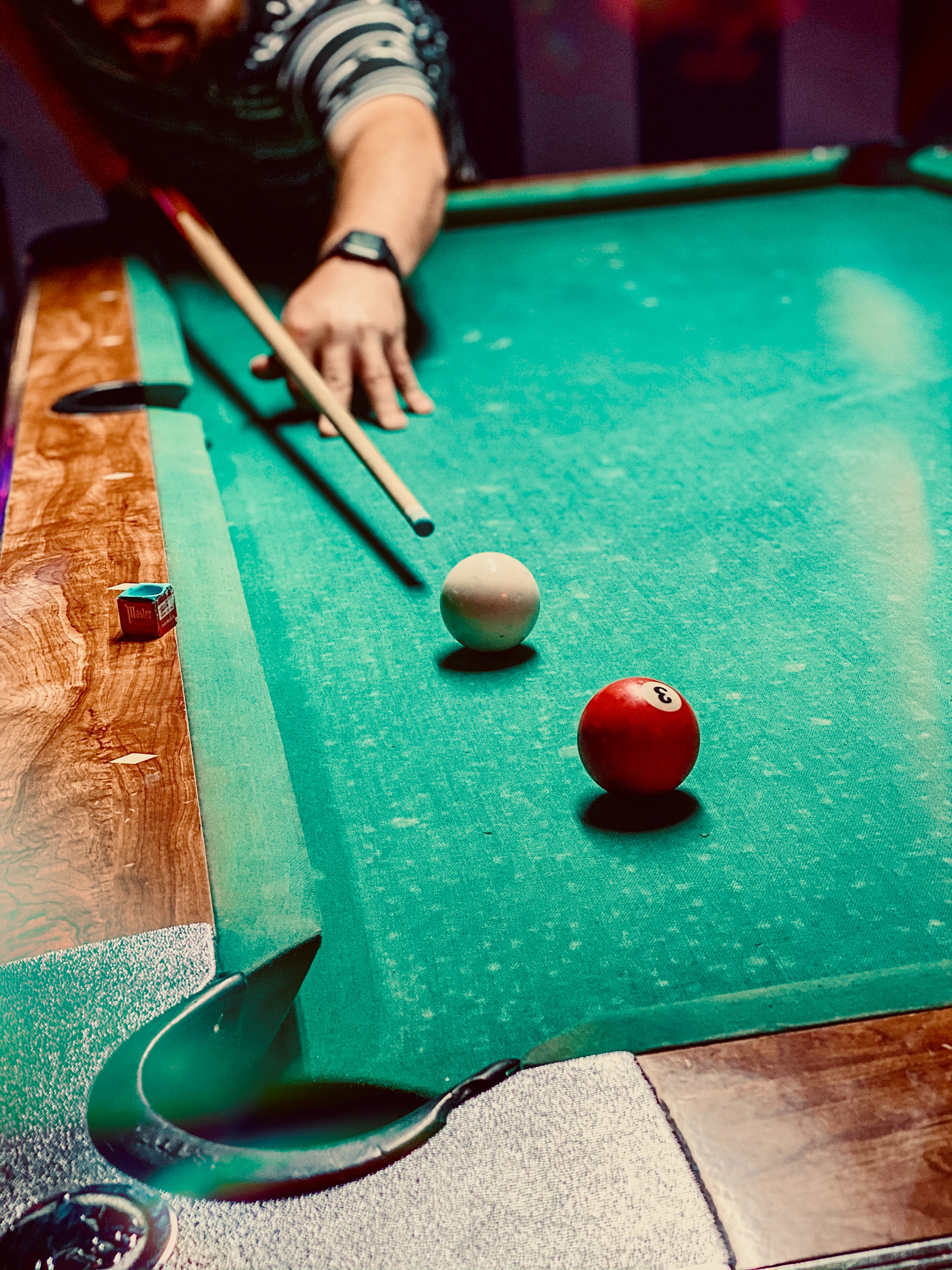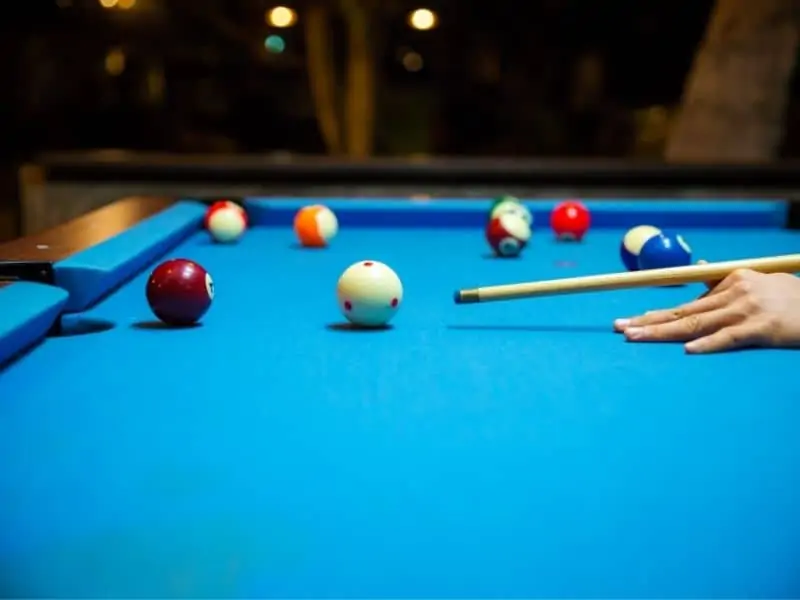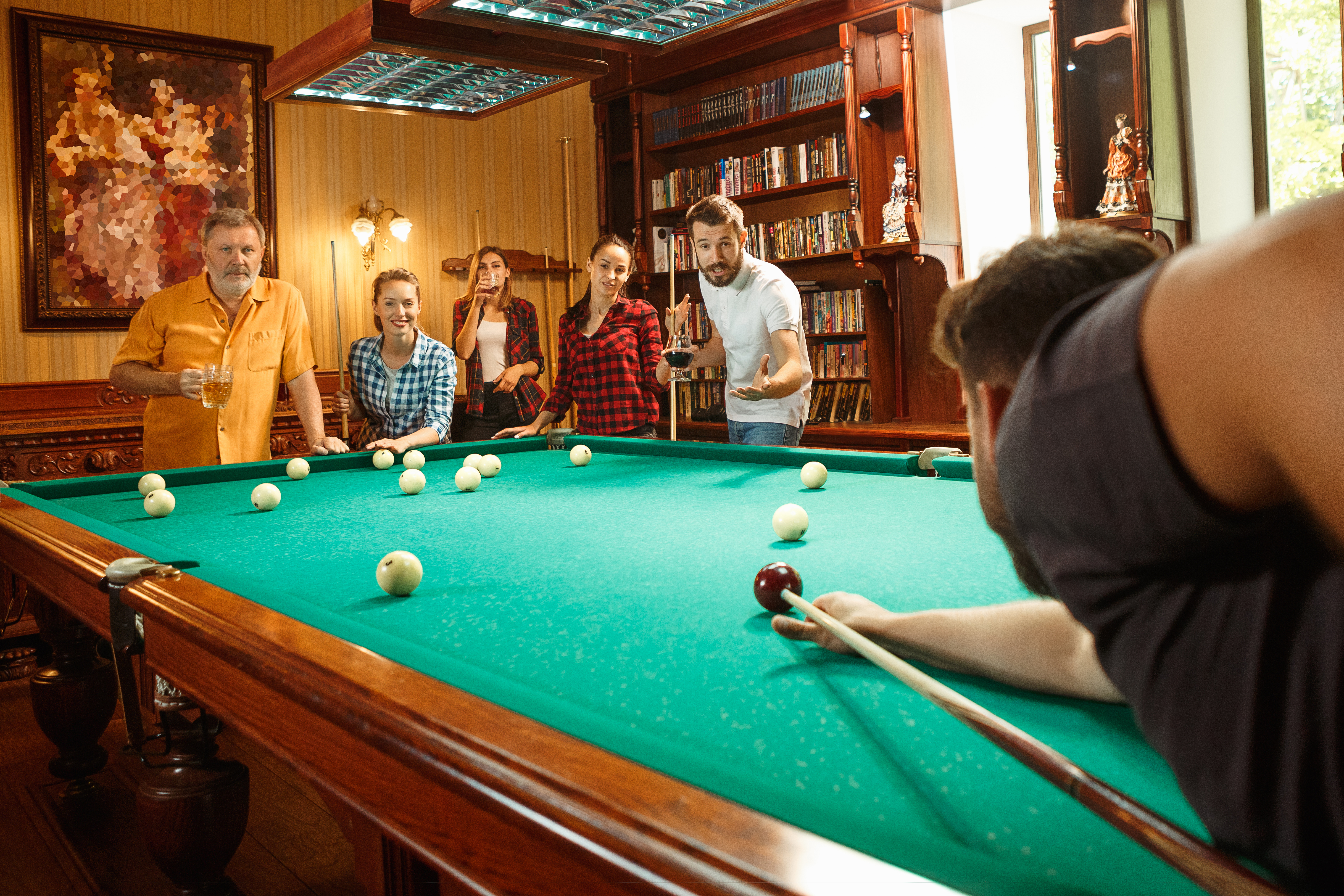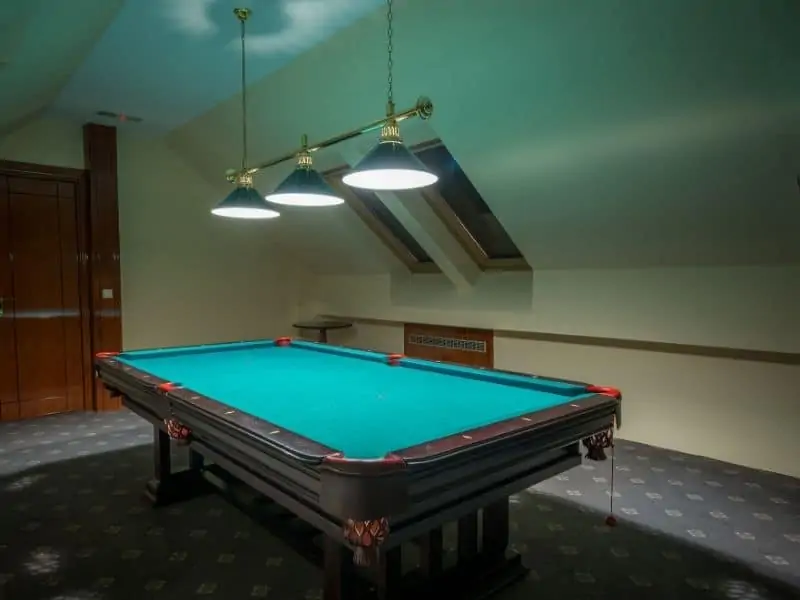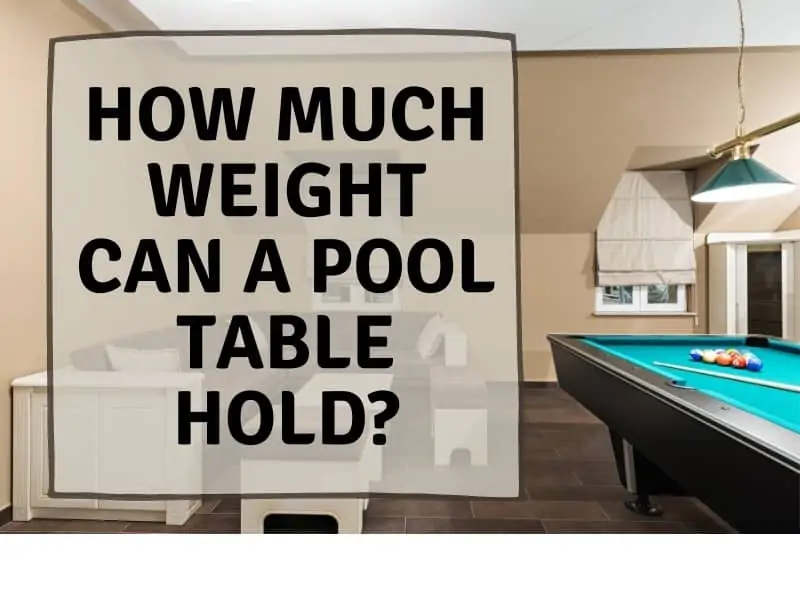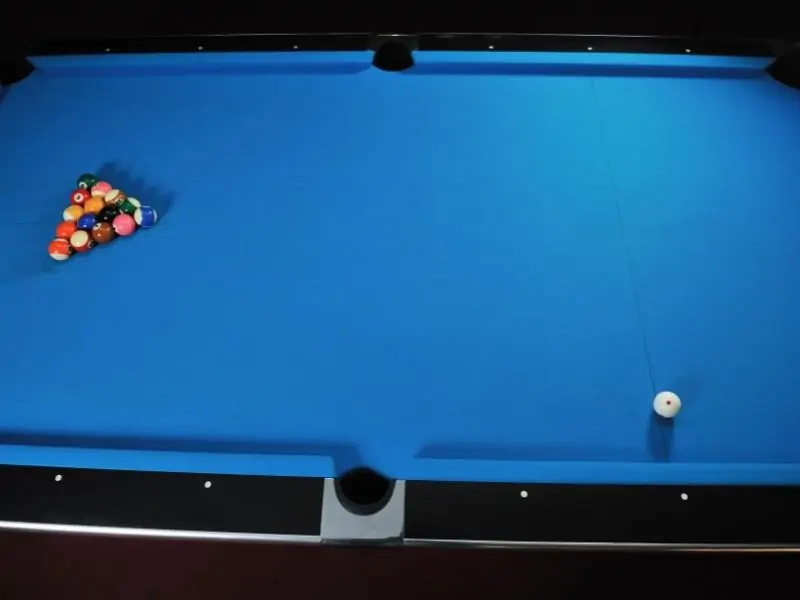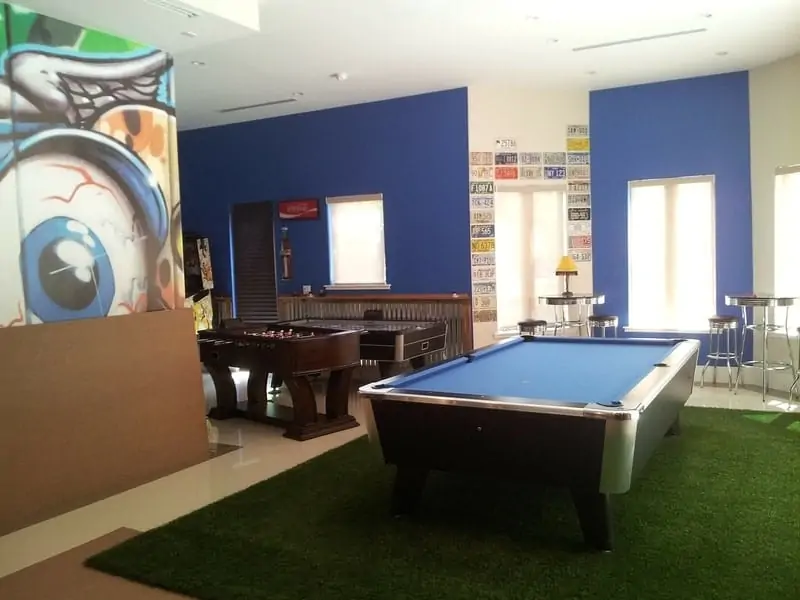Pool tables are heavy items. Most tables weigh around 800 to 1200 pounds. But it’s not just their weight that makes them hard to move. They are also relatively fragile and are definitely not designed to be moved fully intact.
It’s nearly impossible to move a pool table out of a room fully intact without damaging it. But what if you only want to move it to the other side of the same room? Or move it out of the way for any reason? Isn’t there a better way than taking a pool table apart? Read on to find out how to move a pool table a few feet.
4 Options for Moving a Pool Table a Few Feet
There are four viable options when it comes to moving a pool table a few feet. Each one of them comes with some degree of risk that you should consider not moving the table at all if it’s an option. The best way to keep a pool table in good condition is to leave it in one spot. But since that isn’t always an option, we’ll go over the four different options below. They are as follows:
- Take it apart and move it.
- Use a pool table lift.
- Use 4 dollies.
- Use furniture sliders and a bunch of friends.
Safety Precautions
Moving a pool table involves lifting and maneuvering a heavy object, so safety must be your top priority. Here are some precautions to consider:
Wear Protective Gear: Use gloves to protect your hands from splinters or sharp edges. Consider wearing a back brace to support your back during heavy lifting.
Proper Lifting Techniques: Always lift with your knees, not your back. This means bending your knees when picking up heavy objects rather than bending at the waist.
Clear the Path: Before you start moving the table, make sure the path to its new location is clear of obstacles. This minimizes the risk of tripping or damaging the table (or your home).
Seek Assistance: Never attempt to move a pool table alone. Always have a team of helpers, and make sure everyone knows their role before you start moving.
Secure Loose Parts: If any parts of the table are loose or removable, secure or remove them before moving the table to avoid accidents.
Tools and Materials Checklist
Depending on the method you choose for moving your pool table, you’ll need a variety of tools and materials. Here’s a checklist for each option:
Option 1: Take the Pool Table Apart
- Screwdrivers (flathead and Phillips)
- Wrenches
- Masking tape (for labeling)
- Bubble wrap or blankets (for protecting parts)
Option 2: Use a Pool Table Lift
- A reliable pool table lift jack or equivalent equipment
- Helper(s) for assistance
Option 3: Use Four Dollies
- Four furniture dollies
- At least three people for assistance
- Locking mechanism or blocks for wheels
Option 4: Use Furniture Sliders and Friends
- Furniture sliders (appropriate for your floor type)
- A team of friends or family members to help
Common Mistakes to Avoid
When moving a pool table, mistakes can result in damage to the table, your home, or even injury. Here are some common errors and how to avoid them:
- Dragging the Legs Across the Floor:
- How to Avoid: Always lift the table high enough that the legs are clear of the floor, or use furniture sliders or dollies to move it smoothly.
- Lifting the Table by the Rails:
- How to Avoid: Lift the table by its body or legs, not the rails. The rails can be damaged easily, which affects the table’s playability.
- Not Securing Loose Parts Before Moving:
- How to Avoid: Remove or secure any loose or removable parts of the table before you start moving. This prevents them from falling off and getting damaged or causing injury.
- Not Planning the Path Ahead of Time:
- How to Avoid: Before you start moving the table, know exactly where it’s going and ensure the path is clear of obstacles.
- Ignoring the Weight Distribution:
- How to Avoid: When lifting and moving the table, be mindful of its weight distribution. Try to keep it as level as possible during the move to avoid stressing the frame.
Option 1: Take the Pool Table Apart
If you’re serious about protecting the pool table, taking it apart is the best bet. This may seem like overkill, but it falls under the umbrella of “better safe than sorry.” Moving a pool table without taking it apart can damage the frame, the legs, and can cause injury to those moving it.
Depending on why you’re moving it, this may be ideal. If you’re not planning on playing on the table for a while, taking it apart and storing it safely is the best option.If you decide to go this route, you can watch this video for help.
Author’s Note:
Even taking the table apart is not without risk. You can drop or mishandle the slate, lose hardware, or damage the felt.
Option 2: Use a Pool Table Lift
Unless you have a pool table lift jack or equivalent equipment lying around, you’ll have to purchase or rent one for this method. Whatever kind of lift you use, you’ll want to make sure it is able to lift the weight of your table.
This lift, fromApolloLift, is rated for 1760 pounds. To do this, you’ll have to locate a central position under the table to place the lift jack. You can then raise the lift until all four legs are off the ground, then you and a friend or two can push the table to its new location.
This method is not without risk, though. Any time you lift a pool table off its legs, you risk damaging the frame. Not all pool tables have a sturdy central beam that will work for a table lift. If you decide to go this route, inspect under your table to see if the frame has a central place that will work with the lift.
If not, try a different method.- Lifting the pool table anywhere but its direct center will not allow you to raise all four legs off the ground, so you’ll end up dragging the legs across the floor.
Option 3: Use Four Dollies
A slightly less risky option that using a pool table lift is to use four dollies. You’ll need at least three people for this method. And of course, four furniture dollies likethese from Vestil.
For this method, you’ll need two people (at least) to lift one side of the table at a time, while the third person slides the dollies under the legs. Once you have the dollies under the legs on one side, make sure to lock or block the wheels so they don’t roll while you’re lifting the other side of the table. Once you have a dolly under each leg, you can push the table to its new location.
Once there, you can block the wheels on one side again and then reverse the process to take the dollies out from under the table.
Author’s Note:
Be aware that, even lifting one side at a time, there’s still a risk of damaging the frame. The less time the table spends off its legs, the better.
Option 4: Use Furniture Sliders and a Bunch of Friends
The fourth and final option involves using the help of several friends and furniture sliders. You’ll have to purchase sliders depending on the type of floors in the room. I recommend these SuperSliders for carpet and theseFelt Sliders for hard floors.
These sliders are pretty self-explanatory. You simply put one under each leg, using two people to lift one side of the table at a time. Then you can push the table to where it needs to be. Even with the sliders, the table will be difficult to move, so make sure you have plenty of help!
- I like this option best because you don’t have to lift the table very high, which means you can do it quickly, reducing the chances of damaging the table.
After the Move: Re-leveling Your Pool Table
After relocating your pool table, it’s highly likely that it will need to be re-leveled. Here’s a step-by-step guide:
Check for Level: Place a carpenter’s level on the table to see if it’s level. Check this in several spots—both along and across the table.
Adjust the Legs: If the table is not level, adjust the legs. Most pool tables have adjustable legs or feet that can be raised or lowered.
Use Shims: For finer adjustments, consider using shims. These thin pieces of material (often wood or cardboard) can be placed under the legs to help level the table.
Check and Recheck: After making adjustments, always recheck with your level.
Call a Professional: If you’re having trouble getting the table perfectly level, it may be worth calling in a professional.
Maintaining the Condition of Your Pool Table
Moving your pool table can be hard on its components. Here are some tips to help maintain its condition:
Clean Regularly: Use a brush to keep the felt clean and free of dust and chalk residue. Avoid using a vacuum as it can stretch the felt.
Keep it Covered: When not in use, keep your pool table covered. This will protect it from dust, spills, and other potential damage.
Climate Control: Pool tables do best in a stable environment. Avoid placing your table in direct sunlight, and try to keep it in a room with consistent temperature and humidity.
Regular Inspection: Periodically inspect the table for any signs of wear or damage, such as loose rails or pockets, and make necessary repairs.
When to Consider Hiring a Professional Mover
Sometimes, it’s best to leave the moving to the experts. Here are scenarios when you might want to hire a professional:
Value of the Table: If your pool table is a high-end model or has sentimental value, it may be worth the investment to ensure it is moved without damage.
Health and Physical Limitations: If you or your helpers have health or physical limitations that make lifting heavy objects unsafe, hiring a professional is the smart choice.
Distance of the Move: If you’re moving the table to another room on a different level, or to a new location entirely, professionals can ensure it’s done safely.
Lack of Help: Moving a pool table is not a one-person job. If you can’t enlist enough helpers, it’s best to hire a professional.
Peace of Mind: Knowing that your pool table is in the hands of experienced movers can greatly reduce stress associated with the move.
Potential for Damage: If the room or path where the table needs to be moved through is tight, with risks of damaging walls or the table itself, a professional mover with experience can minimize these risks.
In Conclusion
No matter how you decide to move the table, you’ll likely have to level it again once you get it to the new location. Most tables have three pieces of slate that make up the playing surface, and moving the table often gets them out of whack.
If you’re moving the table to a new spot on carpet, you’ll have to wait a minimum of a few days for the table to settle before checking to see if it’s level.
These options are in no particular order, and you’ll have to decide which is right for you. Taking a pool table apart to move it a few feet is really a lot of work, so you may be better off using the dolly or furniture slider method. However, if you have to go through a door or over some kind of threshold, you might be better off taking the table apart. The choice is yours and I wish you good luck! For more information, check out my article on moving a pool table without taking it apart.
Other Articles You May Be Interested In:
Best Pool Cues for the Money: Discover the top pool cues that offer great value without breaking the bank.
Pool Table in the Garage? Here’s What You Need to Know: Understand the essential considerations for setting up a pool table in your garage.
Break Cue vs Playing Cue: What’s the Difference?: Learn the key differences between break cues and playing cues to enhance your game.
How Much Does a Good Pool Cue Cost?: Explore the factors that determine the cost of a high-quality pool cue.
Are Mini Pool Tables Worth It? A Complete Guide: Read our comprehensive guide on mini pool tables and decide if they’re the right fit for you.
